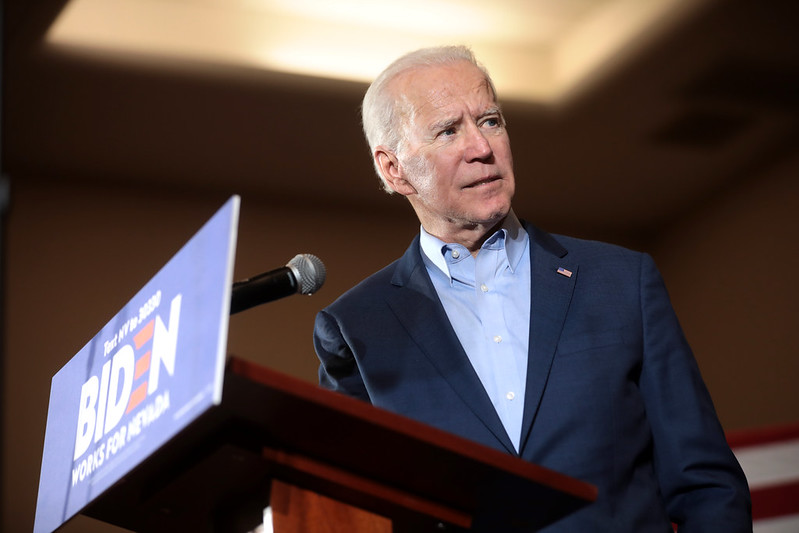The next generation is proving immensely talented, with young climate activists scaling up campaigns for climate action, finding innovative ways to amplify their voices, and working collectively to effect meaningful change.
A strategic priority for IISD is engaging with new audiences to ensure our work extends beyond the offices of policy-makers and reaches those who might not otherwise discover it. One important demographic for us is youth, who are proving immensely talented at scaling up campaigns for climate action, finding innovative platforms and strategies to amplify their voices, and working collectively across the globe to effect meaningful change.
The aim of our recent IISD Next project was not to use young influencers as a means of promoting our work; rather, we wanted to learn from them and understand how our expertise could best support their sustainability goals. The partnerships we’ve formed over the past year have given us a new perspective on what effective communication of climate research entails, and we look forward to many more engaging collaborations in the near future.
“Working with youth has not only been fun, it has opened our eyes to how our work can better reach these key audiences,” says Lourdes Sanchez, Senior Policy Advisor and project lead.
Here are just a few insights from our team, based on their experiences:
Youth Have Access to Unique Expertise
At IISD, researchers often have specialized understandings in their areas of expertise, which is what makes them so adept at developing evidence-based solutions, but it can be easy to lose sight of the bigger picture. The next generation, however, is very much attuned to current events, emerging trends, and how these all connect—they can speak about complex issues succinctly and relate them to the real-world consequences we face if we do not act now.
The next generation is very much attuned to current events, emerging trends, and how these all connect.
“Youth have access to many canons of knowledge and modes and platforms of communication that we may not,” says Sumeep Bath, IISD Experimental Lakes Area (IISD-ELA) Communications Manager. “Through formal education and their own research methods, young people build up many skills and understandings that are often unique to their generations—and that can certainly teach us a thing or two.”
Not All Social Media Platforms Are What They Seem
“Create a video about the impact of climate change on freshwater … but make it festive. And viral.”
The IISD-ELA team decided to experiment with a newer social media platform to communicate some heavy truths about the impact that climate change is having on freshwater lakes. While already engaged on Twitter, Facebook, and Instagram, the team had assumed that TikTok was the domain of amateur dancers and influencers and did not hold potential for science communication.
They were wrong. TikTok is indeed a highly dynamic platform that can host every kind of content—including more complex multimedia-based posts. It allows users up to 60 seconds to combine text, video, music, and meme culture to convey information, tell detailed stories, and persuade an audience.
We assumed TikTok was the domain of amateur dancers and influencers and did not hold potential for science communication. We were wrong.
As the final products revealed, “While it can take some work to pull a TikTok together, the results can be informative, engaging and even humorous,” says Pauline Gerrard, IISD-ELA Deputy Director. “It’s proven to be an ideal platform for successful science communication.”
Young Voices Are Distinct From One Another and Reflect Local Communities
Youth are continuously demonstrating their dedication to the fight against climate change, often with an intersectional and equity-based lens that is missing from mainstream policy circles. What sometimes gets lost in the coverage of protestors hollering for action against polluters is how the next generation is also concerned about climate adaptation.
By turning a conversation with Jamaican activist Jhannel Tomlinson into a creative and interactive article, the team at IISD Resilience amplified on-the-ground perspectives of how climate change is making life harder for farmers while increasing gender inequality in local communities.
“More importantly, this article sheds light on what a youth leader has accomplished. It demonstrates the important role youth are playing to ensure the opportunities for protection against climate change impacts avoid gender biases,” says Catherine Burge, IISD Communications Officer, Resilience. “Youth have a strong collective voice, but there is a lot to learn from them individually, too.”
Tomlinson says it best: “Youth are pushing; we are recognizing that we have to be the ones to take command of this because we are fighting for our future.”
The Next Generation Needs a Green Recovery More Than Anyone
Fridays for Future Toronto Coordinator Aliénor Rougeot, who worked with IISD’s Energy team on a video and blog post about the green recovery, told our Energy team that if we were going to collaborate, it would need to involve us coming to the table with open minds, not fully formed ideas.
Flexibility is key when it comes to projects with young people; by being open to new ways of thinking and doing, boundaries can be pushed and more meaningful impacts achieved.
“Engaging with people like Allie can help us make our research even more relevant to the generation who will arguably be most affected by the policies put in place today,” says Charly Blais, IISD Energy communications assistant. “I really enjoyed joining forces with another young person also working on climate issues, but from a different, on-the-ground activism perspective.”
Co-creation and Collaboration Are Critical to Generating Content Everyone Finds Valuable
IISD’s team at the Earth Negotiations Bulletin developed a new web platform (set to launch on Earth Day 2021) that makes understanding and navigating climate negotiations simpler so that young people can participate more easily in these events. It was developed in cooperation with YOUNGO, the official youth constituency of the United Nations Framework Convention on Climate Change (UNFCCC), and CliMates, a youth non-governmental organization that trains youth climate negotiators and runs mock climate UNFCCC Conferences of the Parties (COPs) for educational purposes.
Engaging with (youth) can help us make our research even more relevant to the generation who will be most affected by the policies put in place today.
The website updates the user with the latest negotiation news, explains the different negotiation streams and issues, and walks through the history of climate conferences. Further, it supports youth in identifying their field of action in the world of UNFCCC. Texts are supported by videos, graphics, and audio material to ensure the content is engaging and simple. In addition to the platform available year-round, pre-COP events will be held to prep youth and answer their questions as part of the initiative.
Related Articles: What the Next Generation Needs From a Green Recovery | Youth Take Charge of Climate Activism, but to What Avail?
“The process of collaborating with YOUNGOs and CliMates was a great joy and a lot of fun,” says Kali Taylor, Policy Advisor at IISD. “It was a true testament to co-creation. We each brought our own skills and networks to the table to create the vision for the site, develop the content, and get input before publishing. By being so iterative and flexible, we can be assured that the final product will be interesting and relevant for our audience.”
“We were impressed—but not surprised—by the quality of our partners’ work and the commitment to the project,” says Matthew TenBruggencate, IISD Reporting Services’ Media and Communications Officer. “Throughout the course of the project, it became evident that the amount our youth partners were contributing went far beyond a voluntary contribution, and we strove to ensure they were properly recognized and compensated for that effort.”
EDITOR’S NOTE: The opinions expressed here by Impakter.com columnists are their own, not those of Impakter.com.— In the Featured Photo: Young people gather to demonstrate in Exeter. Featured Photo Credit: Exeter Observer.












